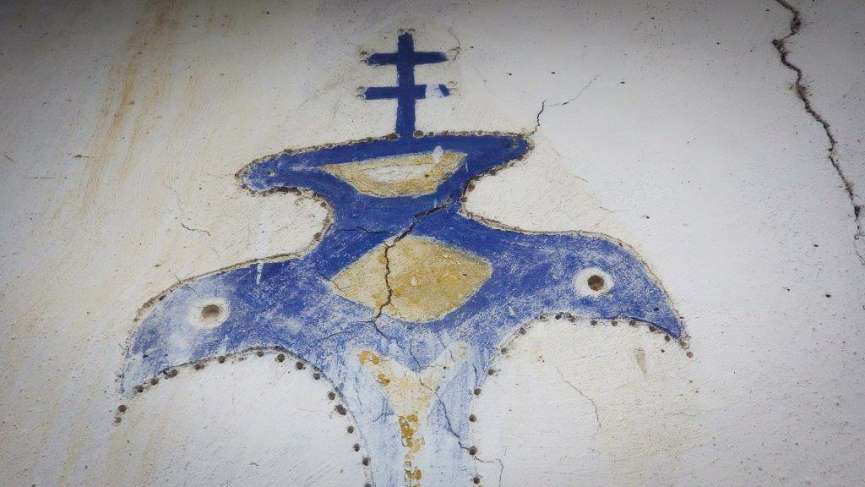Greece is often equated with the very professionally marketed cliché of blue-white architecture on some islands of the Cyclades, especially Mykonos and Santorini. Some visitors to Northern Greece are disappointed in not finding this product of advertising. The architecture in the north of Greece is quite different. It was colorful in the past but was painted over. The taste changes. The walls were repainted and the color pigments omitted.
In Kazaviti there are many traces of the old painted walls on many houses and ruins. There are also colored walls in the other villages on Thassos. The dominant color was blue, named luláki. On some house walls okra (roetel) and yellow pigments were used as well. The smoothly plastered framework in the upper floors were mostly colored. The smooth plaster was sometimes continued a little way around the corner on the stone wall. Completely plastered were only a few houses, mostly it was only the front with the entrance.
Apart from the flat painting of the outer walls, there were often painted ornaments and structured plaster. These elements have now almost completely disappeared. Either the houses collapsed or have been renovated. Only one renovated house on the driveway to the Platia, the central village square, has painted ornaments.
The interiors often had a colored base, or were painted in full color. The doors, windows and ceilings were partly painted. Almost nothing is left of the paints. Only in five to six houses everything is completely preserved. They are abandoned and need urgent attention. The time for these houses is running out!
Some originally preserved houses with painted walls and carved doors have been completely destroyed by the forest fire in September 2016. They were part of the now no longer existing village part “Simenitika”. In the ruins the different colors are now clearly visible. By the heat the color layers have dissolved and represent abstract patches of color now.
Share this Post
Diese Seite ist auch in: Deutsch verfügbar



















































